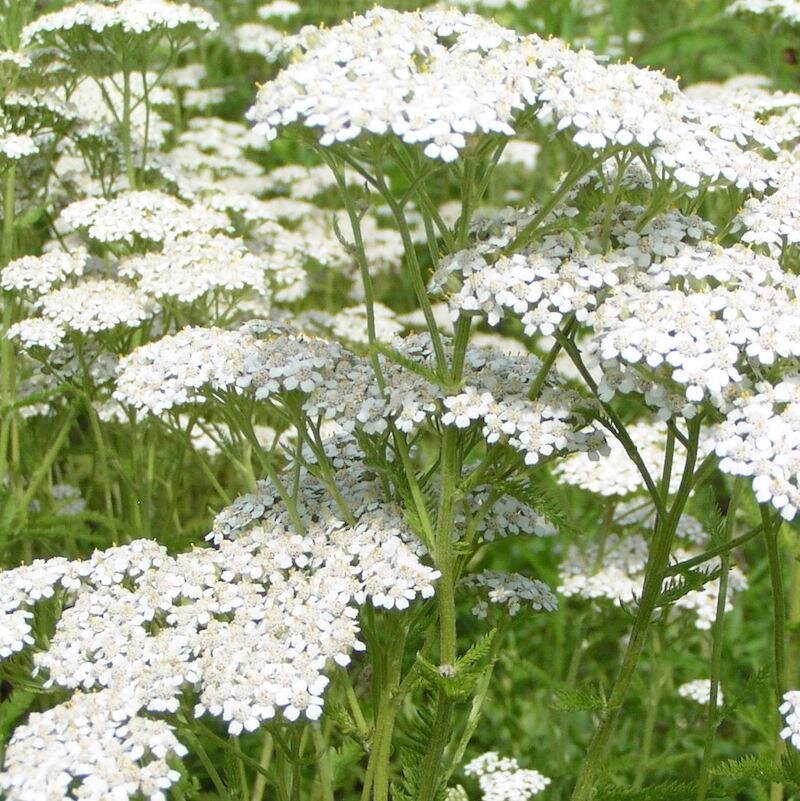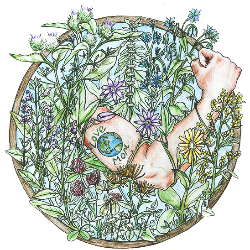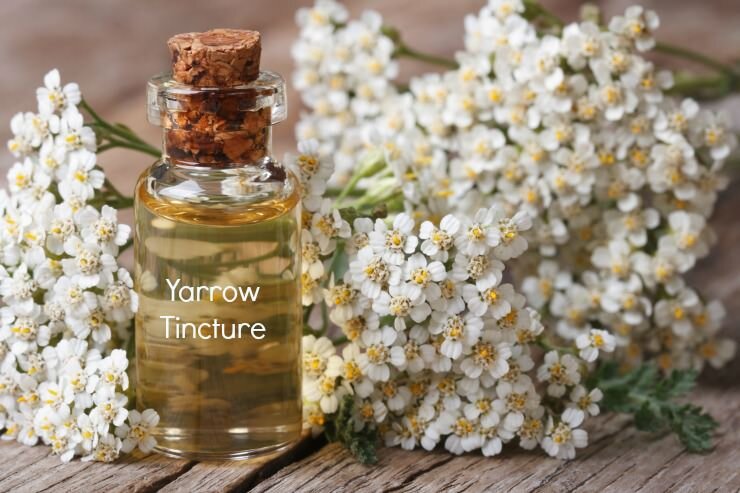Yarrow

Yarrow – My Plant Sister. My Protector
I planted yarrow in my first herb garden because the plant alleviates the throbbing pain of bee stings. Bees terrified my young son Kobe since he was a toddler and received his first sting. Once he screamed so loud and long from a bee sting that a mother ran two blocks from the nearby park because she thought a child was being murdered.
In my opinion, no self-respecting green witch following the Fae path could have a child angry with or afraid of bees. To me, being a witch begins with connecting to nature, flora, fauna, soil, and land in mutual respect and compassion. It’s a symbiotic relationship that carries responsibility for each other. Bees, in particular, give life and help pollinate one-third of our food supply and at least eighty percent of the world’s flowering plants. I felt a calling and a challenge to impart this love of nature to my kids. Even when nature hurts you, it is to be respected. And yarrow would help me elucidate this lesson.
Yarrow is believed to have derived its Latin name, Achillea millefolium, from the Greek warrior Achilles. His mother Thetis dipped her infant son in the River Styx, making him invincible except for that tiny place where she held him by one of his heels. We each have this vulnerability that has been canonized as our Achilles heel. Achilles was a young man with the Trojan War broke out, and though he fought magnificently, the warrior grew took an injury at his heel and used yarrow to treat his battle wounds. Ever since, and possibly even before time recorded, yarrow has been used for its protection and ability to heal wounds.
I remember running my hand along the feathery yarrow in that first garden and thanking it profusely for helping me teach my son these critical lesson about the nature of gardens and pollinators that give and protect life. Yarrow is the first herb that I have found to be native (in some varietal) to my homes at the beach and now in the mountains where I live at 7,000 feet elevation. I brought Yarrow home as part of my pollinator garden and found that the day after I planted yarrow among the Aspen grove and year-round creek, I found it growing in the heat and tough soil. Yarrow has been a friend that has followed me through the years: showing up when I need balance or Divine intervention.

I wrote the beginning of this article before heading out to the Fall Women’s Herbal Symposium, trusting that a lesson of yarrow would be revealed. As I drove through the forests to our sacred gathering, I considered that Light enters through the wound and wondered what wounds could I entice you, the reader, to heal? In Russia, yarrow is burned as a cleansing herb for a broken heart. I Ching practitioners use yarrow stalks for divinations because of their anatomical balance, divination powers and legacy of considerable lucky acts.
After two back to back massages, I listened to the Women of Color panel. While I filled my water bottle with electrolytes I was stung by a bee in my labia, shot as if by a poison dart from a faerie bow. I reeled backwards and was caught by DeAnna Batdorff, owner of Dhyana Center, who had just given me a thorough lymphatic breast check, moving stagnate tissue and emotional pain. What an initiation, she exclaimed. A gift from the ancestors to the root chakra. I felt the zing of the bee medicine radiate from my yoni. Elevated, altered, I calmed my breathing and felt my center grow strong.
DeAnna put me in the care of Lindsey Burnell, Herbalist/Owner at Dragon Song Botanicals, and Taya Rene, herbalist midwife, who calmly brought me to a private room. We hugged. I received a nervine, lay down and took three deep breaths. Go! The stinger came out at once. I asked for yarrow and they both looked at each other. Lindsey had brought a yarrow stem from Alaska and had pulled yarrow from her herbal oracle deck that morning. Yarrow is Taya’s herbal ally and the name of her dog. A painting of the yarrow was on the wall behind my healers as they used the yarrow spray to alleviate the sting then honey for an extra dose of healing.
I called in yarrow for a deeper experience and the plant responded in opulent fecundity. The plant-kindom is always listening. It’s our job to pay attention and respond to increase the magic.
Yarrow Tincture

You can either wildcraft yarrow (making sure not to confuse yarrow with hemlock, which is poisonous). Chop yarrow’s flowering tops and pack into a glass jar, filling it up, 1-inch from the top of the jar. Cover the plant material with at least 100-proof alcohol making sure you completely cover the plant material. Put on the lid or cap and allow to sit in a cool, dark place. Shake often to activate the yarrow energy. Focus your intention on connecting with the plant. See if you can sense the subtle energetic vibrations that could range from protection to healing to simple friendship.
After six weeks, strain the plant material from the liquid. Your tincture can be used to energetically to allay fears, induce love, increase clairvoyance, protect marriages and committed relationships, and for banishing. Yarrow is associated with the goddess and planet Venus and can be used to connect to her energy.
You can use your tincture to heal wounds or as a bitter to stimulate to the gallbladder and other digestive organs. As a diaphoretic herb, yarrow encourages the body’s pores to open allowing heat to escape via sweating, which helps to reduce a fever. Your tincture will strengthen and tone the entire vascular system, such as the arteries, veins, and capillaries. Thanks to its antimicrobial and diuretic properties, yarrow can also help with urinary tract infections. It can ease menstrual cramps and heavy bleeding. Always use in moderation, monitor your emotional and physical body when taking tinctures and seek to find the underlying causes for deeper issues.
Historically, the herb has been used to treat smallpox, typhoid fever, malaria, pneumonia, hysteria and epilepsy. Chewing on the leaves will quell a toothache. It can repel mosquitos when infused in oil. A tea made from the leaves and flowers can be taken for a stomachache, sore throat, headache, cods, tired eyes or as a laxative. Native Americans used yarrow to bring on their moon cycle, ease childbirth, treat breast abscesses and expel the placenta after birth. It is toxic to dogs, cats, and horses. Yarrow also goes by folk names such as Milfoil, Soldier's Woundwort, Knight's Milfoil, Thousand Weed, Nose Bleed, Carpenter's Weed, and Staunchweed.
Yarrow’s erect stems represent the phallic male energy reaching out while the downy leaves recall the soft female power. Its umbrella flower tops appear from June to September. It is a perennial that prefers moderately rich, drained soil and full sun. Unless in a pot, it needs little watering. It grows in pastures, waysides, gardens and even the tough earth in the Eastern Sierra Mountains of California.
Magically speaking, welcome the herb into your life to find that elusive balance, whether through the tincture, or sitting in a meadow of yarrow and allowing the plant’s energy to heal and protect you. Just let it in. Just breathe. And heal.
THIS ARTICLE ORIGINALLY APPEARED IN WITCHES AND PAGAN MAGAZINE #36